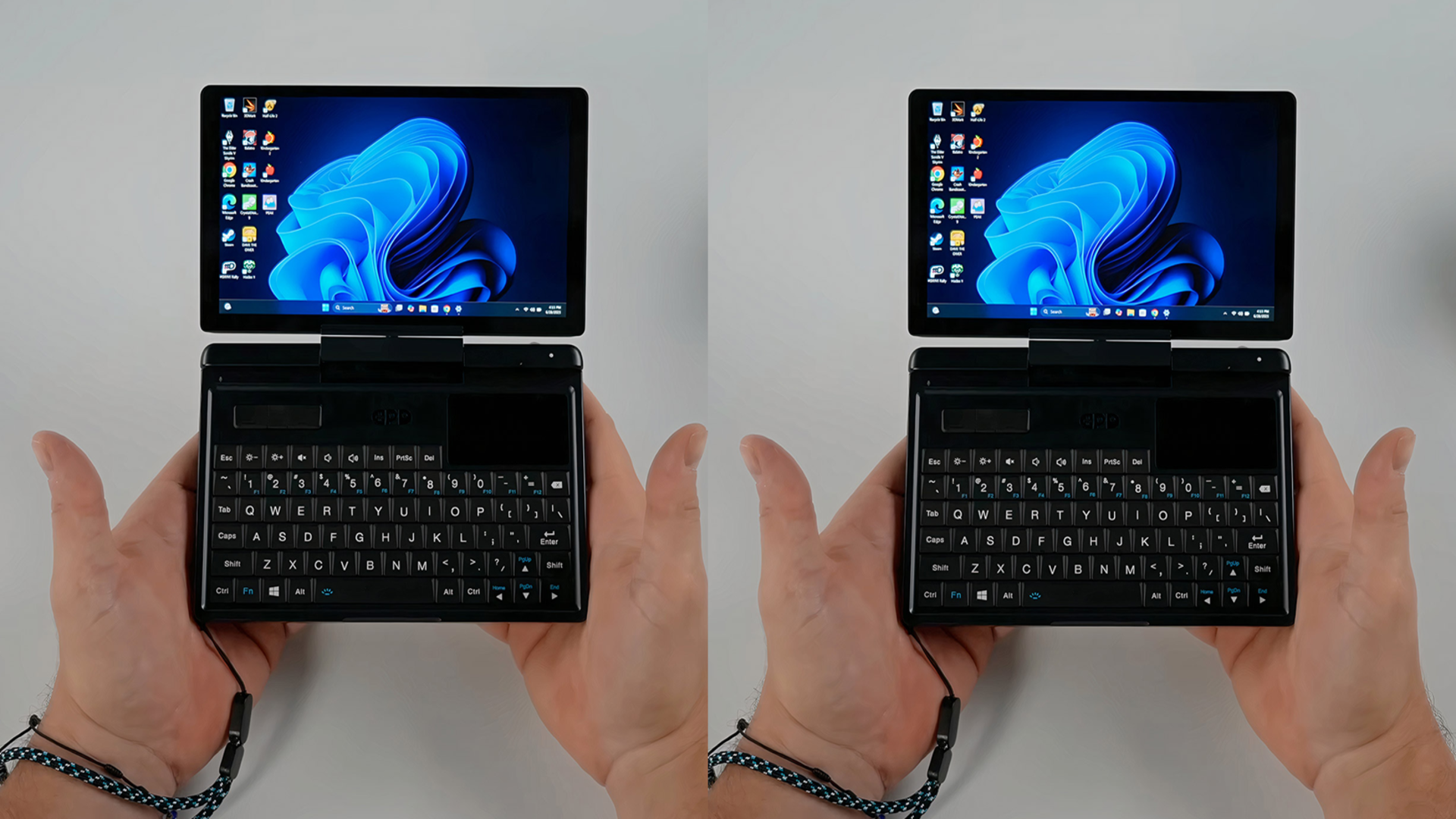Would you buy a 500g laptop with a 7-inch display? $500 GPD MicroPC 2 netbook will appeal to makers and geeks, but I fear the rest of us won't see the appeal
GPD MicroPC 2 offers real x86 power in a form factor smaller than a paperback

- GDP MicroPC 2 packs performance upgrades into one of the lightest laptops with full Windows
- Full-size ports and PCIe 3.0 storage make this mini-PC surprisingly versatile for fieldwork
- 7-inch screen is sharp, bright, and folds flat for flexible use, but not for long sessions or multitasking
While most modern ultraportables chase thin bezels and all-day battery life, GPD’s new MicroPC 2, the follow up to the original MicroPC (first launched in 2018 and refreshed in 2021), takes a different route.
It brings back the netbook format with updated internals and rugged, field-ready durability, aimed at specific use cases like IT maintenance, networking, and mobile diagnostics.
Weighing around 490 grams and measuring 171.2 x 110.8 x 23.5 mm, it is one of the lightest laptops with full x86 compatibility.
Performance in a tiny shell
At its core, the MicroPC 2 runs Intel’s N250 processor, built on the newer Intel 7 process.
While still a low-power chip, it offers clear improvements in base and boost clock speeds, cache size, and integrated graphics performance.
Paired with 16GB of LPDDR5 memory and a 512GB M.2 SSD with PCIe 3.0 x4 bandwidth, the system delivers surprisingly capable performance for light workloads.
Benchmark scores show large gains in both CPU and GPU performance compared to the original MicroPC.
Sign up to the TechRadar Pro newsletter to get all the top news, opinion, features and guidance your business needs to succeed!
Even with those upgrades, it is hard to see this compact device - now available for backing on Indiegogo - gaining broad appeal, especially with an early-backer price close to $500.
Its 7-inch 1080p display offers 500 nits of brightness, making it readable and usable despite the compact form factor.
The screen folds flat for added flexibility in tight environments. Still, the size and layout make it uncomfortable for extended typing or multitasking.
For engineers or mobile professionals who need command-line access, it may serve as a compact problem-solver. But it is best viewed as a backup terminal, not a primary machine.
The MicroPC 2 does make smart use of its rear I/O layout. With dual USB-C and USB-A Gen 2 ports, HDMI 2.1, 2.5Gbps Ethernet, and microSD support, it offers more connectivity than most tablets.
However, the removal of legacy ports like RS-232, available on the original MicroPC, could be a drawback for technicians working with older systems.
Wi-Fi and Bluetooth have been upgraded, but their value depends on whether users see the benefit of these features in a 7-inch form factor.
For IT administrators, field testers, or mobile teams who need a physical keyboard on the go, it could function as an efficient, task-specific business PC.
But most users will find the cramped keyboard, limited performance, and narrow software support too restrictive for general use.
The 512GB version of the MicroPC 2 is currently priced at $495 for backers, with retail pricing set at $607.
At the time of writing, it has raised HKD 754,620 (about $96,131.80) in crowdfunding and is scheduled to begin shipping in September 2025.
You might also like
- These are the fastest SSDs you can buy right now
- Take a look at some of the best external hard drives available
- Outlook back online after suffering a major outage - here's what happened

Efosa has been writing about technology for over 7 years, initially driven by curiosity but now fueled by a strong passion for the field. He holds both a Master's and a PhD in sciences, which provided him with a solid foundation in analytical thinking.
You must confirm your public display name before commenting
Please logout and then login again, you will then be prompted to enter your display name.